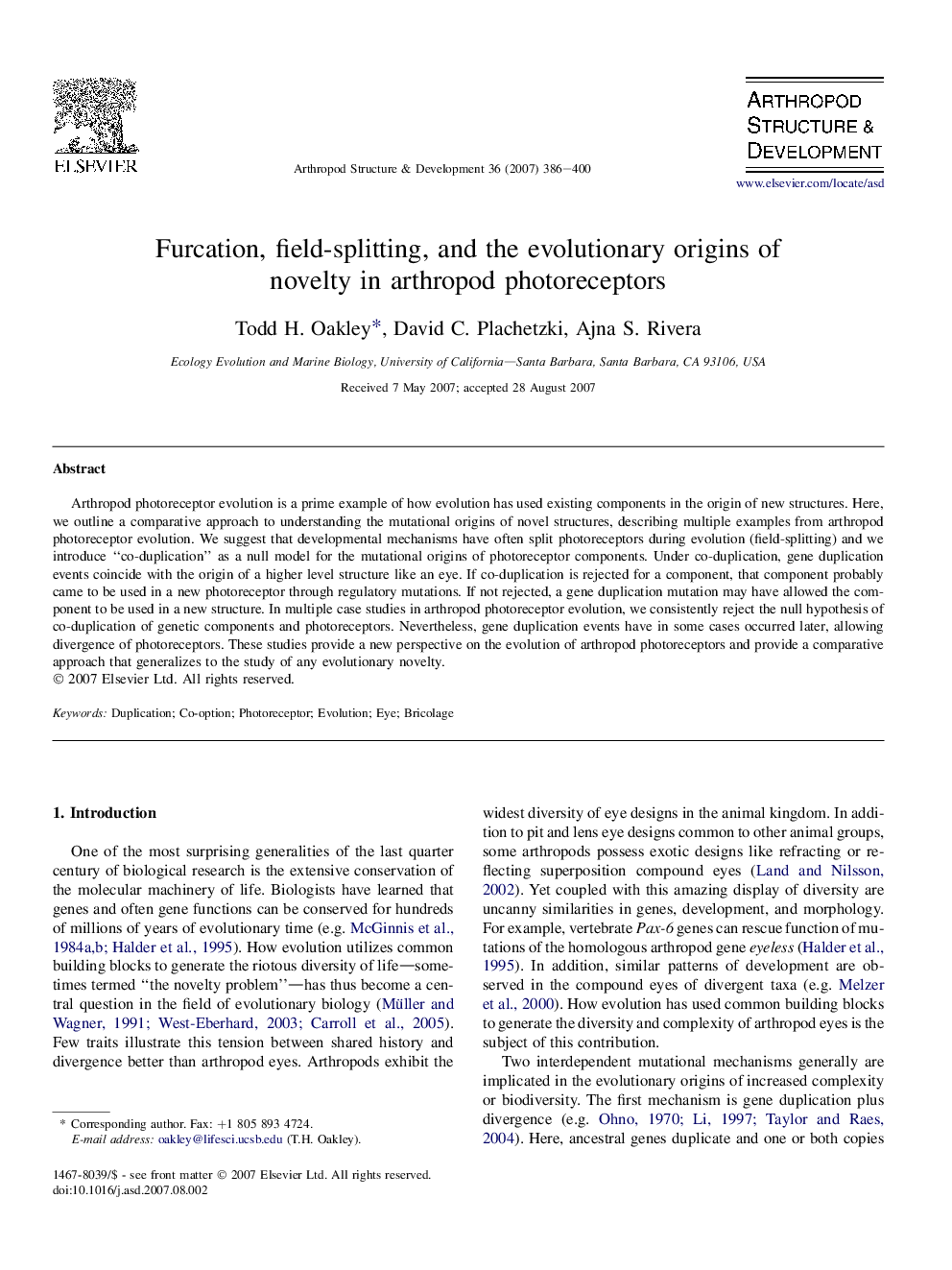| Article ID | Journal | Published Year | Pages | File Type |
|---|---|---|---|---|
| 2779019 | Arthropod Structure & Development | 2007 | 15 Pages |
Arthropod photoreceptor evolution is a prime example of how evolution has used existing components in the origin of new structures. Here, we outline a comparative approach to understanding the mutational origins of novel structures, describing multiple examples from arthropod photoreceptor evolution. We suggest that developmental mechanisms have often split photoreceptors during evolution (field-splitting) and we introduce “co-duplication” as a null model for the mutational origins of photoreceptor components. Under co-duplication, gene duplication events coincide with the origin of a higher level structure like an eye. If co-duplication is rejected for a component, that component probably came to be used in a new photoreceptor through regulatory mutations. If not rejected, a gene duplication mutation may have allowed the component to be used in a new structure. In multiple case studies in arthropod photoreceptor evolution, we consistently reject the null hypothesis of co-duplication of genetic components and photoreceptors. Nevertheless, gene duplication events have in some cases occurred later, allowing divergence of photoreceptors. These studies provide a new perspective on the evolution of arthropod photoreceptors and provide a comparative approach that generalizes to the study of any evolutionary novelty.
